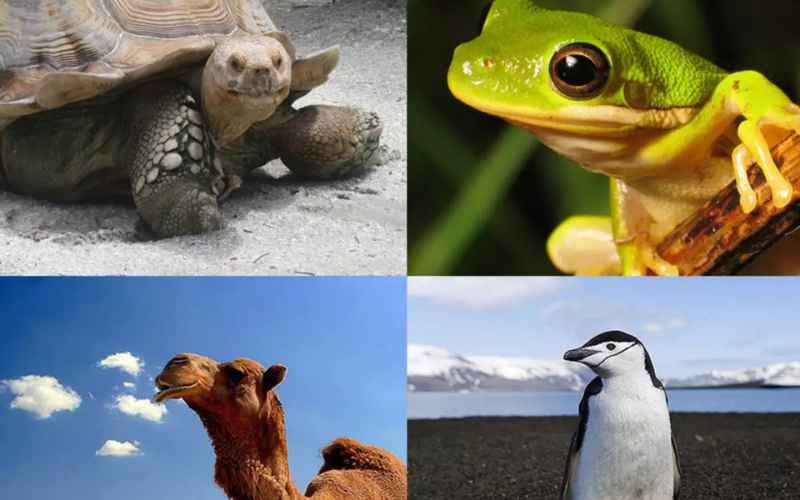In the animal kingdom, survival often depends on access to food and water. However, there are some remarkable species that have evolved unique adaptations allowing them to endure extended periods without these essentials. From the desolate deserts to the deepest ocean trenches, these creatures have mastered the art of survival in harsh environments.

Let’s delve into the fascinating world of the top 10 animals that can live without food and water for months.
- Camels: Camels are perhaps the most famous example of animals capable of surviving extended periods without food and water. Their humps store fat, which can be converted into energy, enabling them to traverse the arid deserts of the Middle East and Africa where water sources are scarce.
- Kangaroo Rats: These tiny rodents are found in the desert regions of North America. Kangaroo rats have highly efficient kidneys that allow them to extract water from the seeds they consume. They can survive solely on metabolic water derived from breaking down food, enabling them to go months without drinking.
- Tardigrades: Also known as water bears, tardigrades are microscopic animals renowned for their extreme resilience. They can survive in a variety of harsh conditions, including extreme temperatures, radiation, and even the vacuum of space. Tardigrades enter a state called cryptobiosis, where they shrivel up and lose almost all of their water content, allowing them to survive in a desiccated state for months or even years until conditions improve.
- Desert Tortoises: These reptiles are adapted to life in arid environments and have specialized kidneys that conserve water efficiently. Desert tortoises can go for months without drinking water by relying on moisture from the plants they consume and by burrowing underground to escape the heat and reduce water loss through evaporation.
- Snails: Certain species of land snails have developed the ability to seal themselves off in their shells to conserve moisture during dry periods. They enter a state of dormancy called aestivation, reducing their metabolic rate and surviving on stored energy reserves for months until conditions become more favorable.
- African Lungfish: Found in stagnant pools and muddy waters of Africa, lungfish possess a unique adaptation that allows them to survive in oxygen-deprived environments. During periods of drought, they burrow into the mud, secreting a mucous cocoon around themselves, and enter a state of dormancy, surviving on stored fat reserves for months until the rains return.
- Cockroaches: Cockroaches are infamous for their resilience and ability to survive in harsh conditions. They can go without food or water for extended periods, relying on their ability to slow down their metabolism and withstand dehydration. Some species can even survive for weeks without their heads!
- Spadefoot Toads: These amphibians inhabit arid regions where water is scarce. Spadefoot toads have adapted to survive dry spells by burrowing underground and entering a state of dormancy. They can remain in this dormant state for months until the rains arrive, allowing them to emerge and breed.
- Humpback Whales: While it may seem counterintuitive, humpback whales are known to fast for months during their annual migration and breeding seasons. These majestic creatures rely on their thick blubber layer as an energy reserve, allowing them to go without food until they reach their feeding grounds.
- Arctic Woolly Bear Caterpillars: These caterpillars inhabit the Arctic tundra, where food sources are scarce and temperatures are frigid. To survive the harsh conditions, woolly bear caterpillars freeze solid during the winter months, entering a state of suspended animation. They thaw out and resume their activities once temperatures rise in the spring, having survived several months without food or water.
Conclusion:
Nature never ceases to amaze with its array of adaptations for survival. From the scorching deserts to the icy poles, these remarkable animals demonstrate the incredible resilience of life in the face of adversity. Whether it’s through storing fat reserves, entering states of dormancy, or slowing down metabolic processes, these creatures have evolved ingenious strategies to endure months without food and water, proving that life finds a way even in the most challenging environments.
FAQs
1. Can animals really survive without food and water for months?
Yes, certain animals have evolved unique adaptations that allow them to survive extended periods without food and water by relying on energy reserves, metabolic adjustments, and specialized physiological mechanisms.
2. How do camels survive in the desert without water?
Camels can survive in the desert by storing fat in their humps, which serves as a source of energy. They also have highly efficient kidneys that minimize water loss and can rehydrate rapidly when water is available.
3. What is cryptobiosis, and which animals undergo it?
Cryptobiosis is a state of suspended animation in which metabolic activity is almost completely halted, allowing an organism to survive extreme environmental conditions. Animals such as tardigrades and certain nematodes undergo cryptobiosis.
4. Can all animals survive without water?
No, not all animals can survive without water. While some have evolved adaptations to endure dry conditions for extended periods, most animals require water for survival.
5. How do kangaroo rats obtain water in the desert?
Kangaroo rats can obtain water by metabolizing fat stored in the seeds they consume. They also have highly efficient kidneys that enable them to extract water from their food and minimize water loss through urine.
6. Do all animals enter a state of dormancy to survive without food and water?
No, not all animals enter dormancy to survive without food and water, but many do. Dormancy allows them to conserve energy and reduce metabolic activity until conditions improve.
7. Are there any animals that can survive in extreme cold without food or water?
Yes, certain animals such as Arctic woolly bear caterpillars can survive extreme cold by entering a state of suspended animation. They freeze solid during the winter months and resume activity when temperatures rise.
8. How long can animals survive without food and water?
The duration varies depending on the species and environmental conditions. Some animals can survive for months or even years without food and water, while others may perish within days or weeks.
9. Can humans learn anything from these animals’ survival strategies?
Yes, studying these animals’ survival strategies can inspire biomimicry and inform strategies for human adaptation to extreme environments, resource conservation, and sustainable living.
10. Do all animals lose weight during periods of food scarcity?
Not necessarily. Some animals may utilize fat reserves for energy, while others may experience muscle wasting or decrease in body size during prolonged periods of food scarcity.
11. How do desert tortoises conserve water?
Desert tortoises conserve water through specialized kidneys that efficiently reabsorb water from urine. They also seek shelter in burrows during the hottest part of the day to reduce water loss through evaporation.
12. Are there any insects that can survive without food and water for months?
Yes, certain insects like cockroaches can survive for extended periods without food and water by slowing down their metabolism and withstanding dehydration.
13. What is aestivation, and which animals undergo it?
Aestivation is a state of dormancy similar to hibernation but occurs during hot and dry periods rather than cold ones. Animals such as snails may undergo aestivation to survive drought conditions.
14. Can animals die from dehydration even if they have stored energy reserves?
Yes, prolonged dehydration can lead to organ failure and death, even if an animal has stored energy reserves. While energy reserves may sustain an animal for a period, water is essential for physiological functions.
15. How do humpback whales survive without food during migration?
Humpback whales rely on thick blubber layers as energy reserves during migration and breeding seasons when they fast for several months. They typically feed heavily before migrating to build up these reserves.
16. Are there any risks associated with animals surviving without food and water for extended periods?
Yes, prolonged periods without food and water can weaken animals, compromise immune function, and make them more susceptible to predation, disease, and environmental stressors.
17. How do spadefoot toads survive in arid environments?
Spadefoot toads survive in arid environments by burrowing underground and entering a state of dormancy during dry periods. They rely on stored energy reserves to sustain them until rains return.
18. Can animals adapt to longer periods without food and water due to climate change?
Some animals may be able to adapt to longer periods without food and water due to climate change, but it depends on their ability to evolve new physiological or behavioral adaptations and the rate of environmental change.
19. What are the evolutionary advantages of being able to survive without food and water for months?
The ability to survive without food and water for extended periods provides animals with a competitive advantage in harsh environments with fluctuating resource availability, increasing their chances of survival and reproduction.
20. Are there any ethical considerations regarding studying animals’ abilities to survive without food and water?
Ethical considerations may arise regarding the welfare of animals used in research to study survival strategies. It’s important to ensure that studies are conducted ethically and with minimal harm to the animals involved.
Related posts:
 “WellHealthOrganic: Nurturing Stress Management”
“WellHealthOrganic: Nurturing Stress Management”
 30 Micro Habits to Transform Your Life in a Few Months
30 Micro Habits to Transform Your Life in a Few Months
 Career Potential for Private Yoga Coaches
Career Potential for Private Yoga Coaches
 Decoding the ‘Love Brain’ Syndrome: 5 Signs to Watch Out For
Decoding the ‘Love Brain’ Syndrome: 5 Signs to Watch Out For
 Understanding the Impact: How Nightmares Affect Your Mental Health
Understanding the Impact: How Nightmares Affect Your Mental Health
 Summer Men’s Fashion Trends to Watch Out For in 2024
Summer Men’s Fashion Trends to Watch Out For in 2024
 Still in Bed? 5 Must-Try Morning Routine Ideas for a Highly Productive Day
Still in Bed? 5 Must-Try Morning Routine Ideas for a Highly Productive Day
 10 Quiet Habits Of Successful People, According To Psychology
10 Quiet Habits Of Successful People, According To Psychology
 How to Reduce Belly Fat: Effective Tips and Strategies
How to Reduce Belly Fat: Effective Tips and Strategies




